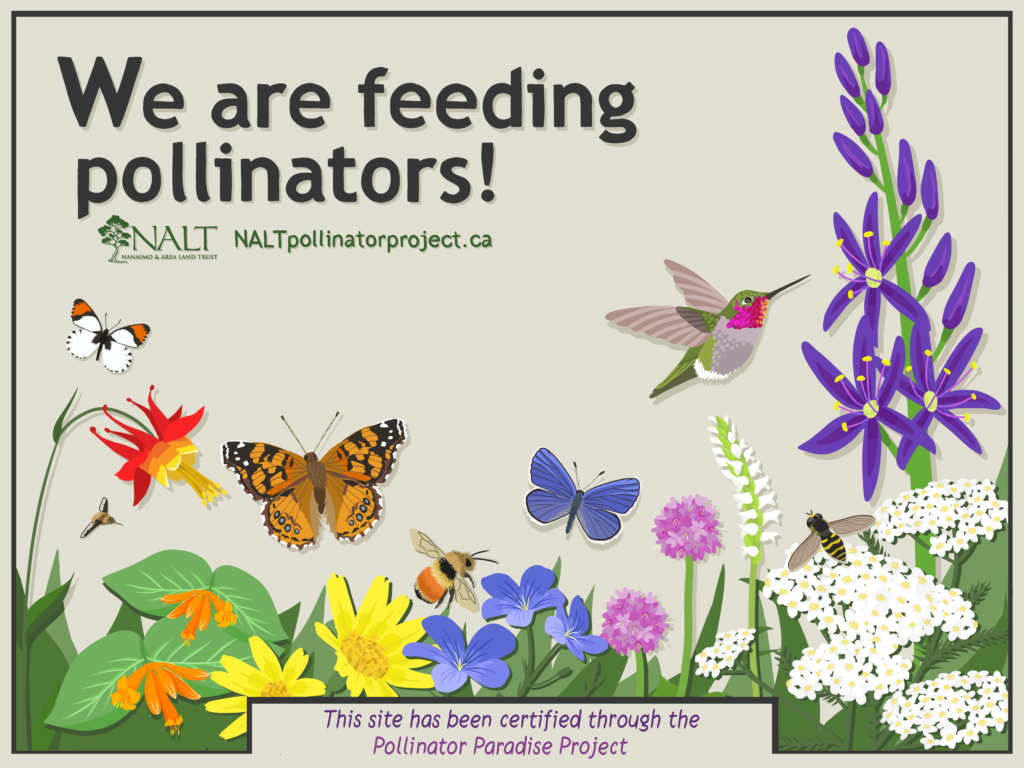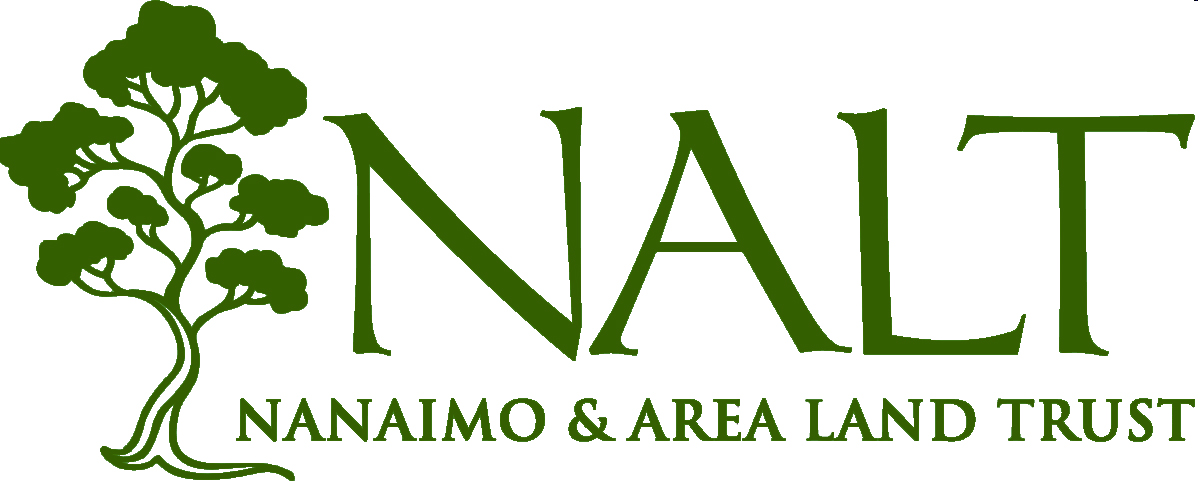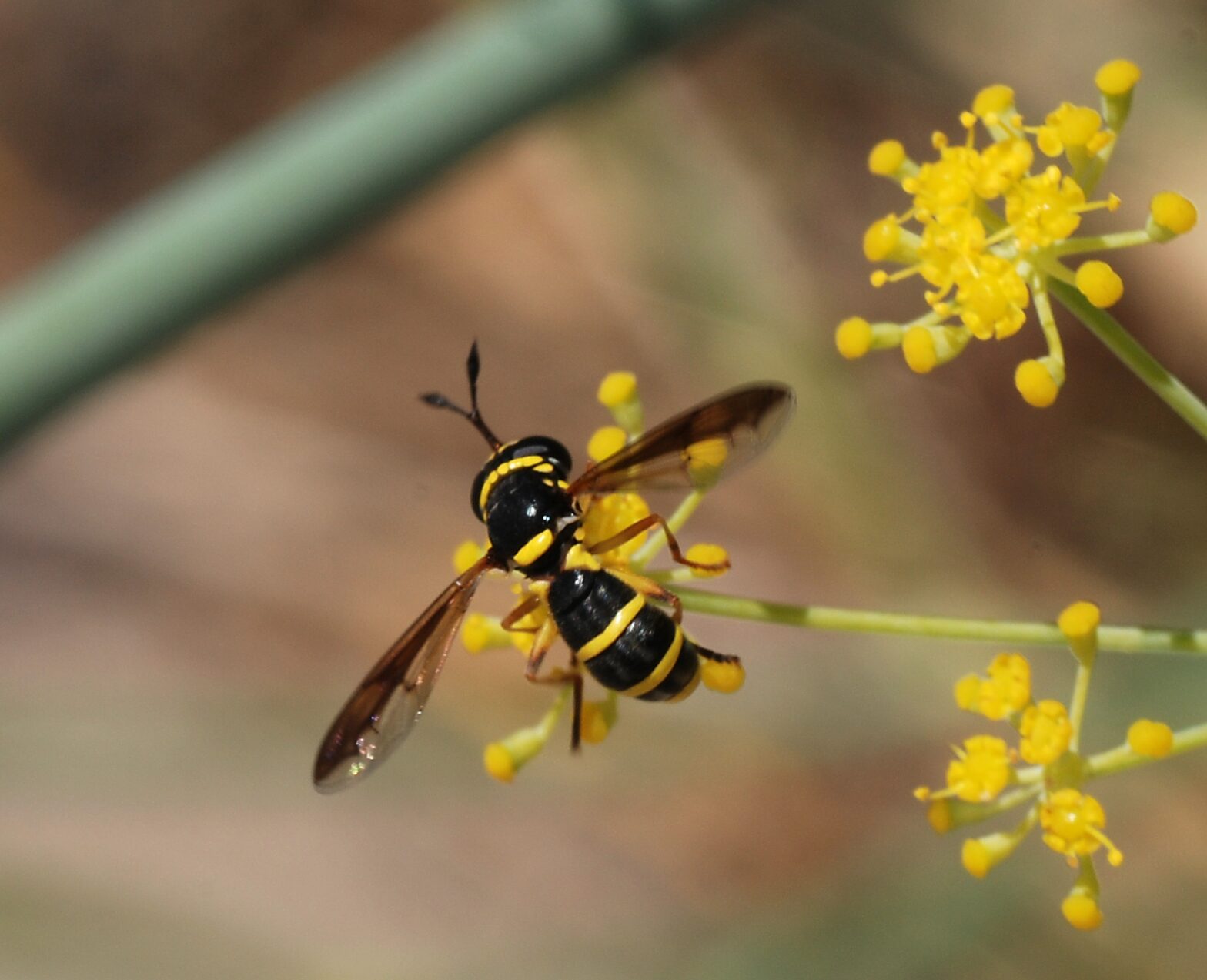The Nanaimo Area Pollinator Paradise Project wants to encourage everyone in the process of creating their pollinator paradise gardens. Whether you would call yourself a beginner or an expert, we applaud your effort at creating pollinator habitat.
An important part of our project is tracking overall pollinator habitat and habitat connectivity. As part of that effort we offer a free certification program where people who plant pollinator patches can add their location to a map that will track habitat in the region.
Certify your new or existing pollinator paradise patch to show that you are creating habitat and contributing to pollinator conservation in the Nanaimo region. Spread the word about pollinator gardens by putting up one of our signs! To get a sign, email stewardship@nalt.bc.bca.

Requirements for certification
SIZE AND EXPOSURE: A suitable Pollinator Paradise can be easily integrated with an existing garden. There is no minimum area requirement in order to certify your habitat; however, a truly effective Pollinator Paradise will be at least 9m2 (100ft2). The total area may be split among several sites at your location and there is no upper limit for the size of a Pollinator Paradise. Many pollinator plants need a lot of sun, so your Pollinator Paradise should optimally be located in an area that receives at least six hours of sun a day.
NESTING & HOST PLANTS: If you are worried that creating nesting locations for bees and other pollinators might leave you stuck with dangerous swarms, no need to worry! Most bees are solitary nesters, where one bee creates a ‘nest’ for 20 – 30 eggs/larvae. Bumble bees create nests for abut 50 individuals, though a well established nest can have a few hundred.
What to do:
- Leave some dead wood piled up for wood nesters
- leave areas of bare soil for ground nesters.
- Build a bee nest box or keep some leaves and
- keep hollow stemmed plants available for mining bees
- leave your leaves, as they provide overwintering habitat for butterflies and bumblebees. If you don’t want them on your lawn, leave them in a pile in other areas of your garden. You can leave them permanently (it’s great for your soil!) or remove them in late spring when animals are no longer overwintering.
PLANTS: Attract a variety of pollinators by planting different native species, including wildflowers, shrubs, and trees that provide flowers throughout the spring, summer, and fall in a variety of colours and flower shapes. A Pollinator Paradise should contain at least eight species of native plants. Plant in clumps as pollinators are more attracted to groupings than single plants. It is important to avoid plants grown with pesticides and to avoid the use of pesticides.
WATER: Ensure there is a source of water (ex. a shallow dish filled with rocks) and replace the water regularly (at least twice a week during hot weather).

